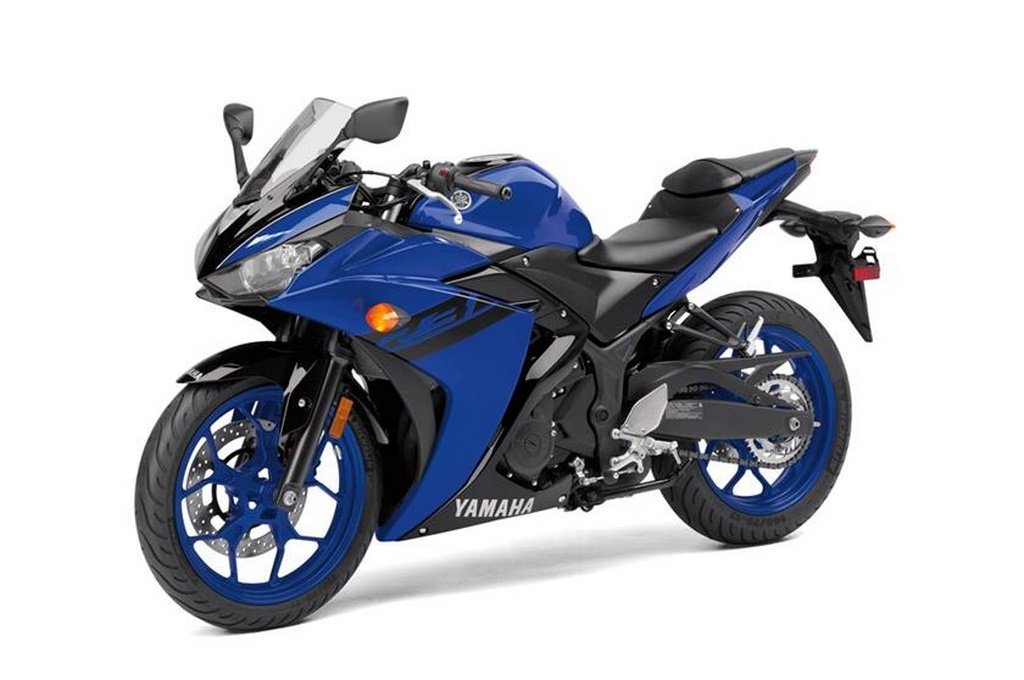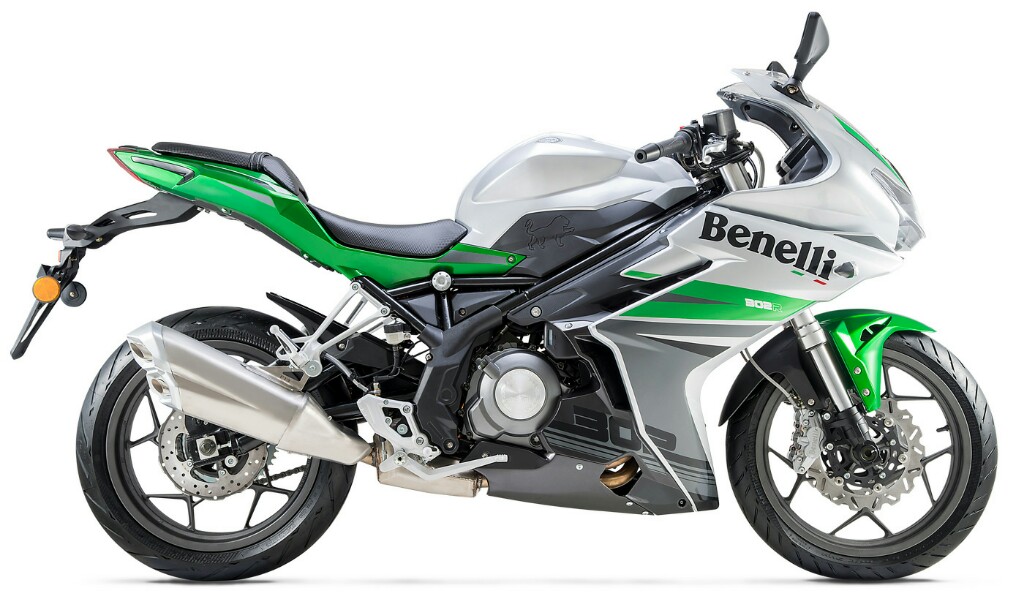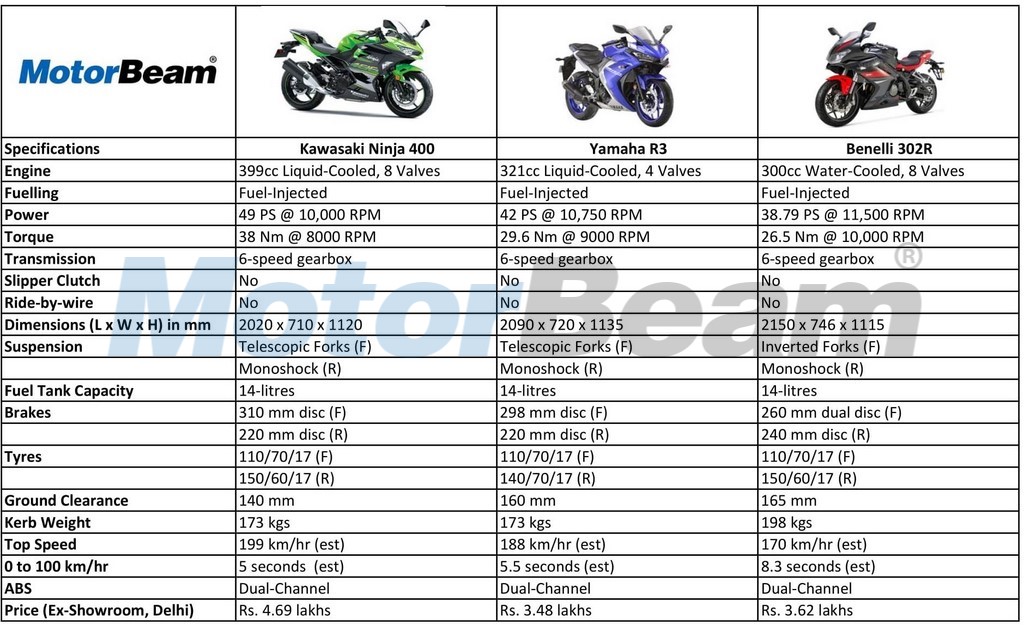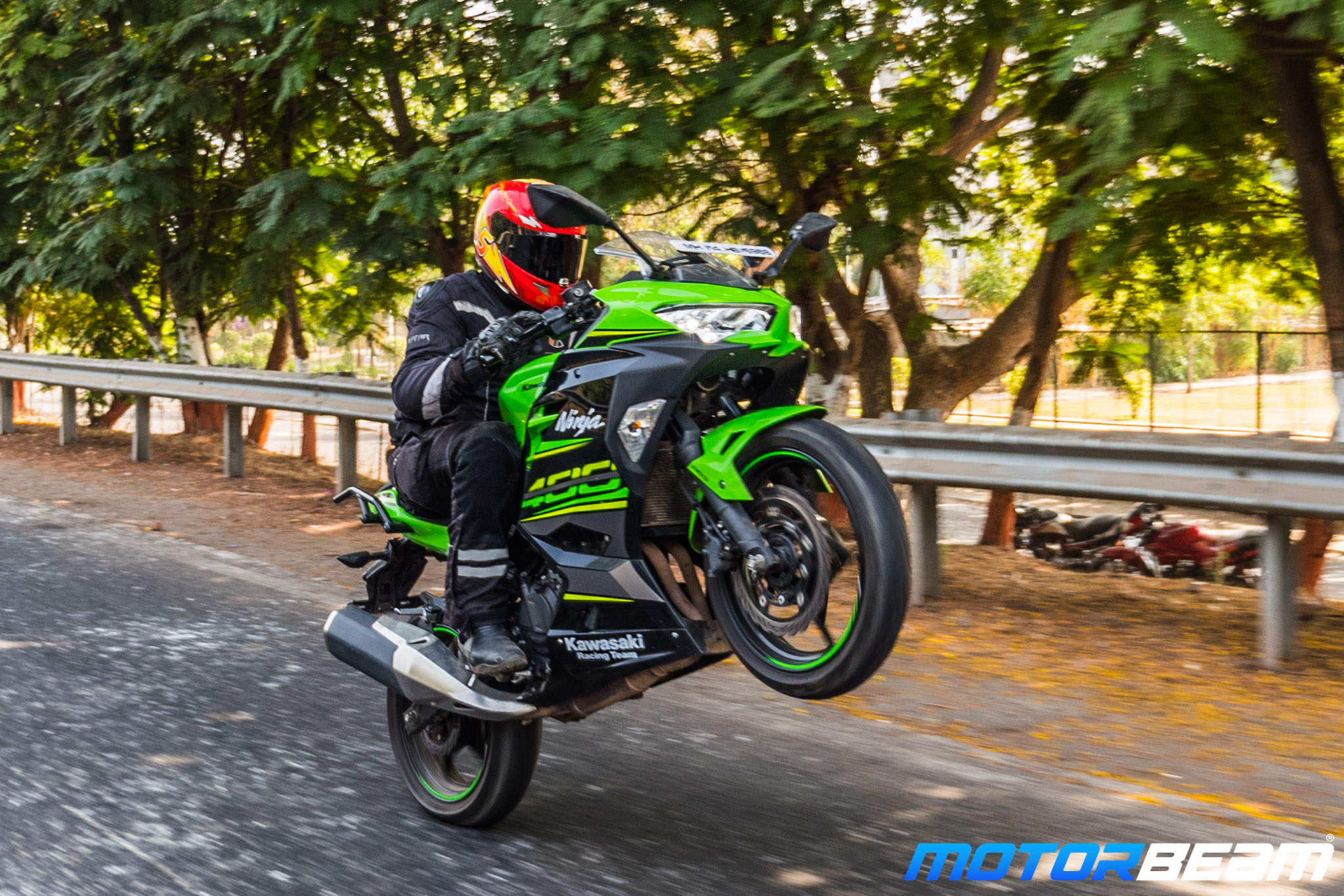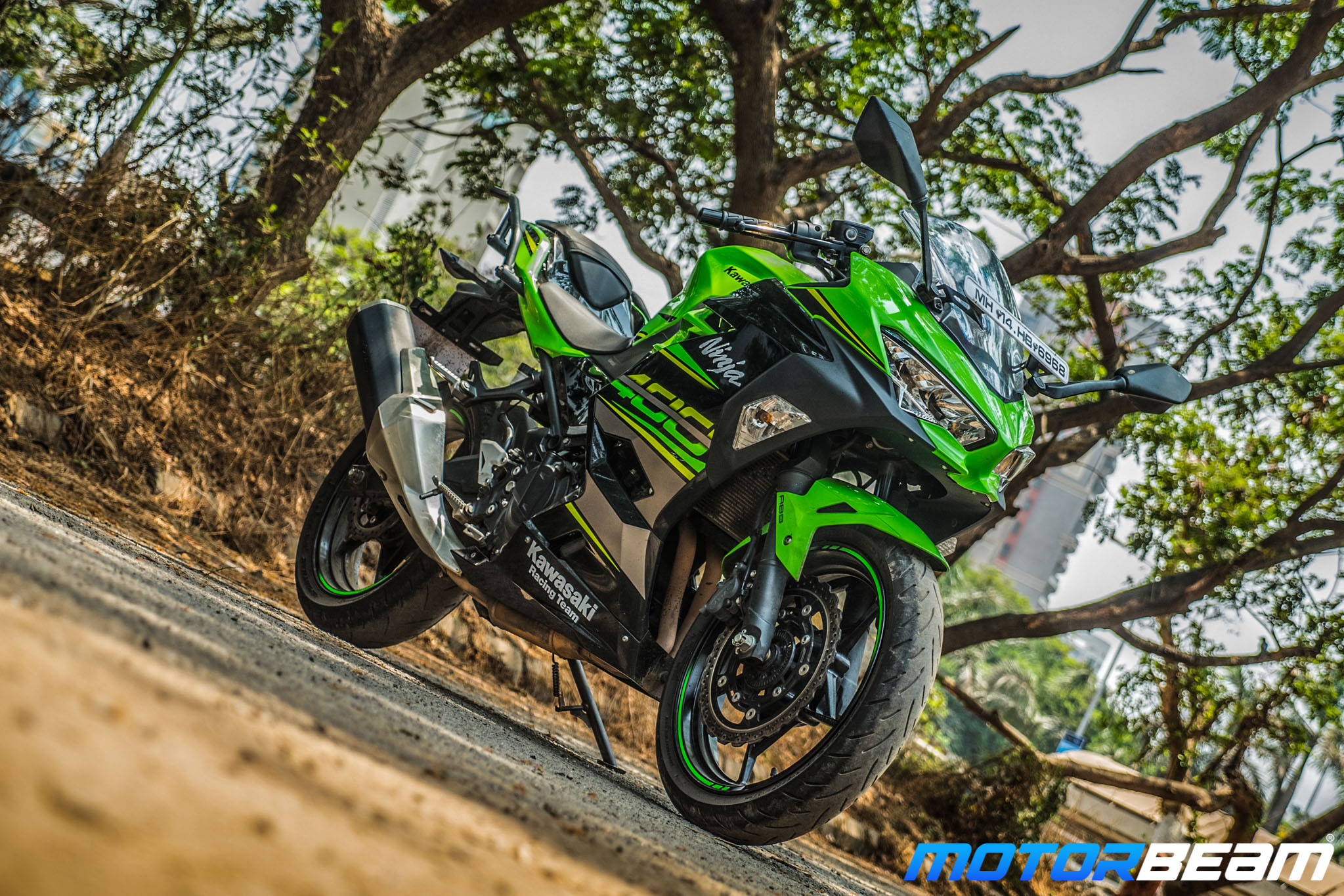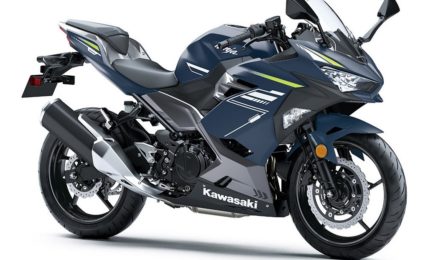We do a quick paper comparison of the recently launched Kawasaki Ninja 400 with its prime rivals, the Yamaha R3 and the Benelli 302R.
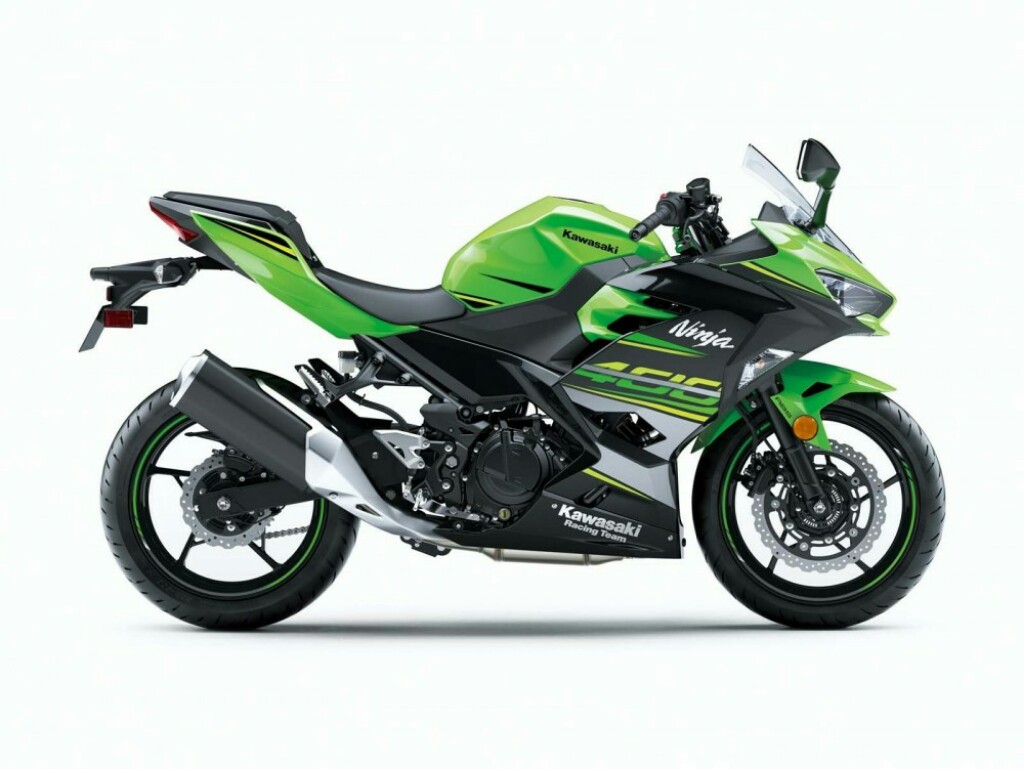
The Kawasaki Ninja 400 has been launched in India at Rs. 4.69 lakhs (ex-showroom, Delhi). We pit it against the other twin-cylinder 300cc supersport offerings in the segment, the Yamaha R3 and the Benelli 302R to find out whether putting in a premium of over Rs. 1 lakh for the Ninja 400 makes any sense or not.
Design and Looks – All the three motorcycles look sporty and racy, featuring a dual headlight setup and a full fairing. While the Benelli 302R gets two strips of LED DRLs, the Ninja 400 gets more fancy and purposeful LEDs incorporated into the headlight. However, it’s the Benelli that’s got more visual bulk and appeal and a layman could mistake it for a larger 600cc bike while the Ninja 400 is clearly the stand-out motorcycle courtesy its KRT Green colour.
Dimensions – In terms of dimensions, all the three motorcycles are closely matched. However, the Benelli is the longest and the widest while the Yamaha is the tallest in this comparison. The new kid on the block has a slight advantage in terms of the wheelbase while the Yamaha R3 scores over its competition in the seat height department. The Ninja’s 1370 mm wheelbase makes it more flickable in the city roads as against the R3’s 1380 mm and the Benelli 302R’s 1410 mm. The R3’s relatively lower saddle height of 780 mm makes it slightly more accessible to shorter riders as well. Having said that, 785 mm seat height of both the Ninja 400 and Benelli 302R won’t be a cause of concern either.
Features – All the three vehicles here offer a LED tail-light, digital-cum-analog instrument cluster, fat rear tyre and a 14-litre fuel tank. However, the Ninja 400 additionally offers an LED headlight while the Benelli 302R gives you inverted front forks and adjustable clutch and brake levers. Talking of brakes, the Benelli offers twin discs for the front wheel while the other two do with just one. The Ninja 400 and Benelli 302R get petal discs while the R3 does with regular disc brakes.
Performance – The Kawasaki Ninja 400 clearly has an advantage in terms of sheer power and torque figures. The relatively larger 399cc parallel-twin mill makes 49 PS of power and 38 Nm of torque as compared to the R3’s 42 PS and 29.6 NM and the Benelli’s 38.79 PS and 26.5 Nm. All the bikes here come with a 6-speed gearbox. The sad part is none of them offer a slipper clutch.
Verdict – Clearly, all the three bikes here will most likely be sought by someone who currently owns a single-cylinder 150-250cc bike. Price is a crucial factor for the Indian buyer and this is where the Ninja 400 starts fading off from the Indian buyer’s wishlist. At Rs. 4.69 lakhs (ex-showroom, Delhi), the Ninja is over a lakh more expensive than the R3 and makes you think whether or not it makes sense to pay such premium for the extra 78cc and 7 PS/8.4 Nm! The Benelli 302R comes very close to the R3 and if you’re planning to get the former, ask yourself this question – will you be able to live with that 198 kgs kerb weight? Contrarily, there is a sweet (in fact very sweet) side to owning a Benelli and that’s the exhaust note! With the Benelli, you could make a statement every time you are riding it on the roads. The R3 makes more sense in our books, at Rs. 3.48 lakhs (ex-showroom, Delhi), it is the most affordable and offers the best bang for your buck.
Kawasaki Ninja 400 vs Yamaha R3
